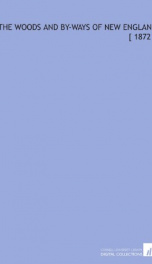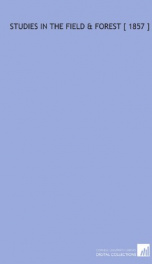a year with the birds

Purchase of this book includes free trial access to www.million-books.com where you can read more than a million books for free. This is an OCR edition with typos. Excerpt from book: I think Mr. Nuttall is incorrect in his description of the Indigo-Bird's song. It certainly has not that variety and pathos which he ascribes to it. The song is rather a lively see-saw without expressing even animation. It ought not to be considered plaintive. His notes are sharp, not unlike those parts of the Canary's song which are disagreeable. I allude to the sip, sip, sip, sip, which the Canary intersperses with his more musical and rolling notes. The whole song of the Indigo-Bird is but a repetition of the sip, sip, of the Canary, modified by the addition of another note, like sip-see, sip-see, sip-see, sip- see, repeated four or five times very moderately, with a few unimportant intervening notes. Neither has the song of the Indigo-Bird so much rapidity as Nuttall ascribes to it. His notes, though not slow, are but little more rapid than those of the Robin. He has the merit, however, of being one of the few of our birds that sing persistently at noonday. THE SUMMER YELLOW-BIRD. There is no common feature in our New England domestic landscape more remarkable than the frequent rows of willows which have at different times been planted by the sides of roads where they pass over wet meadows. The air is never sweeter, not even in a grove of lindens, than the vernal breezes that are constantly playing among the willows, when they are hung with golden aments, and swarming with bees and butterflies. Here, flitting among the soft foliage of these trees after the middle of May, you will never fail to meet the little Summer Yellow-Bird, whose plumage is so near the color of the willow-blossoms that they almost conceal it from observation. The Summer Yellow-Bird is one of that incomparable tribe of warblers, comprehended under the general nameof sylvians, that frequents famili...
Info about the book
Author:
Series:
Unknown
ASIN:
111232674X
Rating:
3.5/5 (5)Your rating:
0/5
Languge:
English
Users who have this book
Users who want this book
What readers are saying
What do you think? Write your own comment on this book!
write a commentif you like a year with the birds try:
Other books by this author
Do you want to exchange books? It’s EASY!
Get registered and find other users who want to give their favourite books to good hands!





